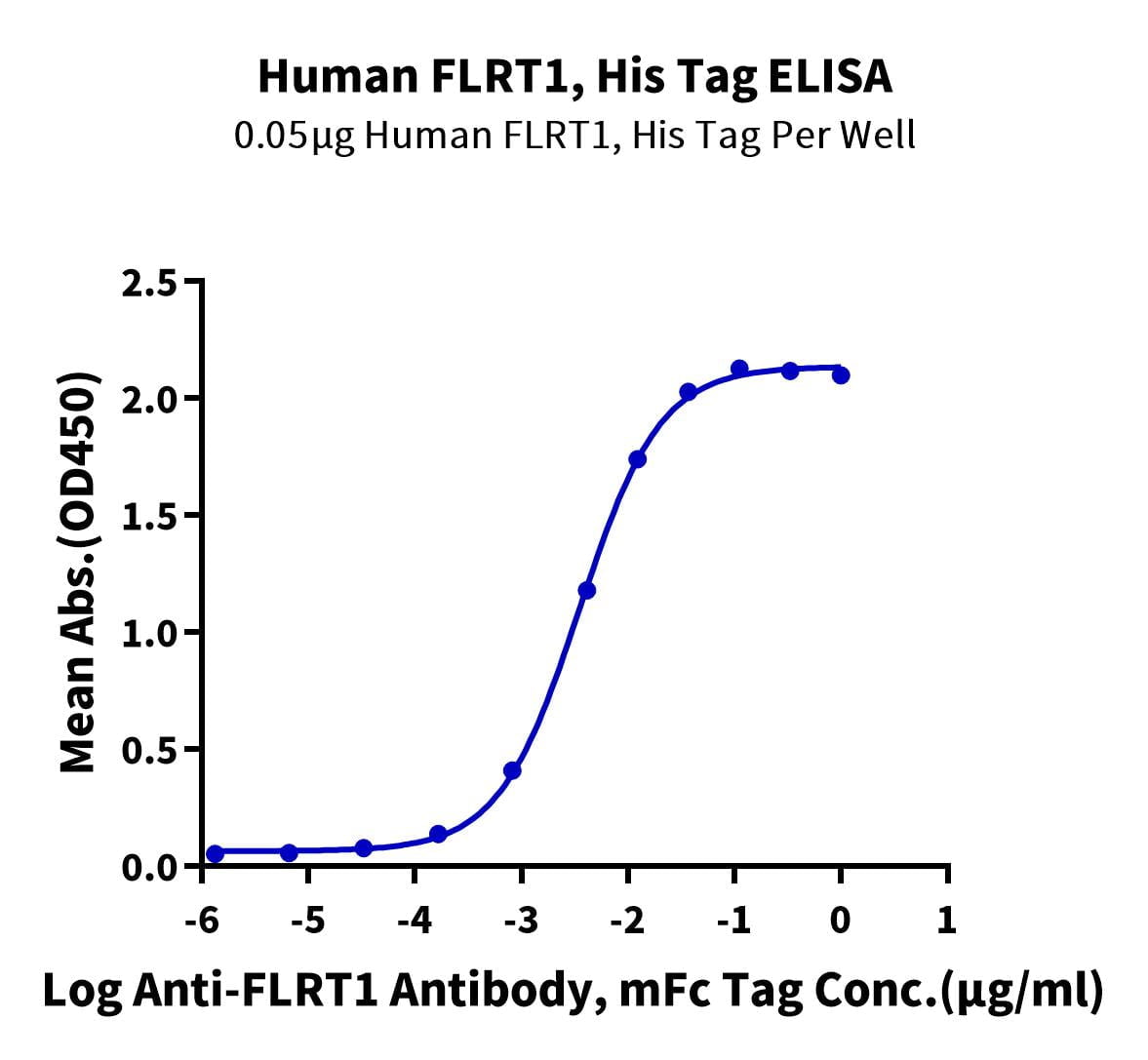| Weight | 1 lbs |
|---|---|
| Dimensions | 9 × 5 × 2 in |
| accession | Q9NZU1 |
| express system | HEK293 |
| product tag | C-His |
| purity | > 95% as determined by Tris-Bis PAGE;> 95% as determined by HPLC |
| background | Fibronectin leucine rich transmembrane (FLRT) proteins have dual properties as regulators of cell adhesion and potentiators of fibroblast growth factor (FGF) mediated signalling. FLRT1 is a target for tyrosine phosphorylation mediated by FGFR1 and implicate a non-receptor Src family kinase (SFK). |
| molecular weight | The protein has a predicted MW of 56.58 kDa. Due to glycosylation, the protein migrates to 60-80 kDa based on Tris-Bis PAGE result. |
| available size | 100 µg, 500 µg |
| endotoxin | Less than 1EU per μg by the LAL method. |
Human FLRT1 Protein 2334
$240.00 – $800.00
Summary
- Expression: HEK293
- Functional: Yes (ELISA)
- Amino Acid Range: Ile21-Pro524
Human FLRT1 Protein 2334
| protein |
|---|
| Size and concentration 100, 500µg and lyophilized |
| Form Lyophilized |
| Storage Instructions Valid for 12 months from date of receipt when stored at -80°C. Recommend to aliquot the protein into smaller quantities for optimal storage. Please minimize freeze-thaw cycles. |
| Storage buffer Shipped at ambient temperature. |
| Purity > 95% as determined by Tris-Bis PAGE |
| target relevance |
|---|
| Fibronectin leucine rich transmembrane (FLRT) proteins have dual properties as regulators of cell adhesion and potentiators of fibroblast growth factor (FGF) mediated signalling. FLRT1 is a target for tyrosine phosphorylation mediated by FGFR1 and implicate a non-receptor Src family kinase (SFK). |
| Protein names Leucine-rich repeat transmembrane protein FLRT1 (Fibronectin-like domain-containing leucine-rich transmembrane protein 1) |
| Gene names FLRT1,FLRT1 UNQ752/PRO1483 |
| Mass 9606Da |
| Function Plays a role in fibroblast growth factor-mediated signaling cascades that lead to the activation of MAP kinases. Promotes neurite outgrowth via FGFR1-mediated activation of downstream MAP kinases. Promotes an increase both in neurite number and in neurite length. May play a role in cell-cell adhesion and cell guidance via its interaction with ADGRL1/LPHN1 and ADGRL3. |
| Subellular location Cell membrane ; Single-pass membrane protein. Endoplasmic reticulum membrane. Cytoplasmic vesicle membrane. Cytoplasm, perinuclear region. Cell junction, focal adhesion. Secreted. Cell projection, neuron projection. Cell junction. Note=In addition to its location at the cell membrane, colocalizes with FGFR1 in punctate perinuclear cytoplasmic vesicles. Detected along neurites and at contacts between neurite termini and other cells. Proteolytic cleavage gives rise to a shedded ectodomain. |
| Tissues Expressed in kidney and brain. |
| Structure Interacts with FGFR1. Interacts (via extracellular domain) with ADGRL1/LPHN1 and ADGRL3 (via olfactomedin-like domain). |
| Post-translational modification N-glycosylated.; Phosphorylated in response to FGFR1 signaling, but is not a direct substrate of FGFR1 or SRC. A mutant where the Tyr phosphorylation sites have been replaced by Phe displays constitutive FGFR1-dependent activation of downstream MAP kinases.; Proteolytic cleavage in the juxtamembrane region gives rise to a soluble ectodomain. |
| Target Relevance information above includes information from UniProt accession: Q9NZU1 |
| The UniProt Consortium |
Data
Publications
Publications
| pmid | title | authors | citation |
|---|---|---|---|
| We haven't added any publications to our database yet. | |||
Protocols
| relevant to this product |
|---|
Documents
| # | ||
|---|---|---|
| Please enter your product and batch number here to retrieve product datasheet, SDS, and QC information. | ||

















